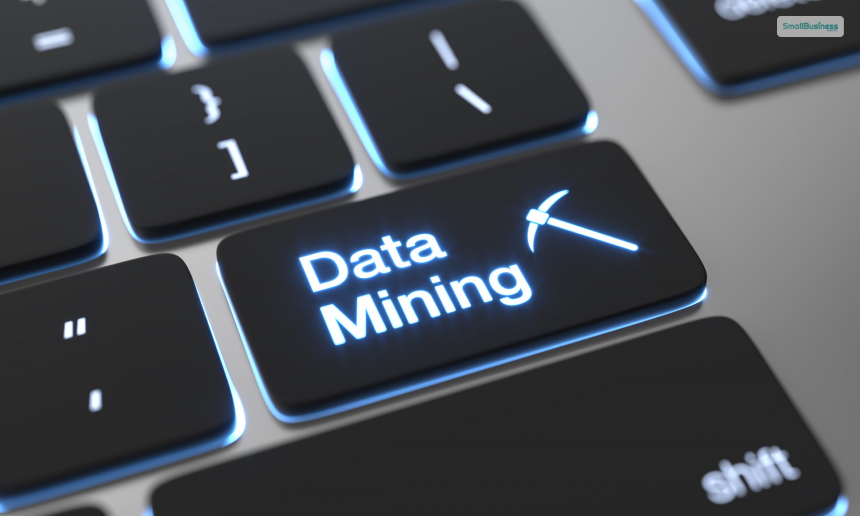Data mining is the process of discovering knowledge in data. With the help of this process, one can find patterns and various other valuable information from big chunks of data. In the last couple of decades, the world saw the adoption of various new techniques with the evolution of data warehousing and the growth of big data. Furthermore, this has helped companies a lot as they have been able to transform raw data into useful knowledge.
In this article, you will learn what data mining is and how it works for businesses in the current business environment. Apart from that, we will also discuss the various techniques that analysts use to make more out of available data. Finally, we will also share with you some factors that make data mining important for businesses. Hence, to find out more about this type of mining, read on thorough to the end of the article.
What Is Data Mining?
According to Investopedia,
“Data mining is the process of searching and analyzing a large batch of raw data in order to identify patterns and extract useful information. Companies use data mining software to learn more about their customers. It can help them to develop more effective marketing strategies, increase sales, and decrease costs. Data mining relies on effective data collection, warehousing, and computer processing.”
Data mining is a process of collecting useful data or processing data from a large source of raw data. It’s a process that implies the analysis of data in large data batches. This process involves the use of different types of software. This type of work has usefulness in several fields like science, research, and business.
Despite all the major advantages associated with this process, as well as the continuous evolution of technology to handle data at a large scale, there are still many challenges. Many leaders today still face challenges related to scalability and automation.
The Goal of Data Analysis
The primary goal of data analysts is to find hidden patterns and relationships in large amounts of data. This information can be used to make better decisions and predictions. With this process, data analysts explore data with the use of various techniques, including clustering, classification, association rule mining, regression analysis, and anomaly detection.
Use Cases of Data Analysis
Data mining is used across a wide range of industries and has applications in finance, marketing, healthcare, telecommunications, etc. For example, this mining technique plays a huge role in marketing by identifying customer segments and targeting marketing campaigns. On the other hand, in the healthcare industry, data mining helps to identify major risk factors for diseases and develop personalized treatment plans for patients.
How Does This Work?
Data mining works through the process of exploration and analysis of information blocks to determine meaningful trends and patterns. Some of the major applications of data mining, as already discussed, are fraud detection, spam filtering, and credit risk management. It also helps in marketing to find out people’s sentiments within a given demographic.
According to TechTarget.com,
“Its core elements include machine learning and statistical analysis, along with data management tasks done to prepare data for analysis. The use of machine learning algorithms and artificial intelligence (AI) tools have automated more of the process and made it easier to mine massive data sets.”
Data mining helps a lot in dealing with massive customer databases, log files, transaction records, web servers, mobile apps, sensors, and more.
The following are some of the major stages of the process of mining:
1. Data Gathering
2. Data Preparation
3. Mining Of The Data
4. Data Analysis and Interpretation
After this process, the data is subjected to evaluation and interpretation. Then, after the finalization of the results, analysts make sure that the data is valid, noble, useful, and easy to understand. Furthermore, once these are complete, the organization uses the knowledge of the data to bring new strategies for implementation.
What Are The Techniques Of Mining Data?
With the use of this type of the mining process, businesses use various techniques and algorithms to convert large chunks of data into useful information. Here are some of the major data mining techniques that you need to be aware of:
1. Association Rules:
This technique involves searching for relationships within data variables. In more detail, it’s a technique used for uncovering the relationship between variables such as large datasets. It’s a popular method used in both data mining and machine learning. In addition, this method has various other applications in different fields, like market basket analysis, fraud detection, and customer segmentation.
2. Classification:
This technique makes use of a predefined class that the analysts assign to objects. This itself creates an additional value within the data set so as to link data pieces.
It’s a technique used in data mining for categorizing data into several predefined classes as per different attributes. It can essentially predict the group a specific data point belongs to. The process can make it a predictive analysis method. The most common classification algorithms include naive Bayes, decision trees, support vector machines, and neural networks.
3. Clustering
Here, the technique identifies similarities between objects and groups the data items based on their uniqueness and their differences from other items. A data miner has to group data into different data points that are similar to each other. Some common types of data clustering include centroid-based, destiny-based data clustering, and hierarchical data clustering.
4. Decision Trees:
This technique involves classifying or predicting an outcome based on a list of set criteria or decisions. The process involves using a supervised machine learning algorithm to use tree-like structures to classify data by making different decisions based on several features.
5. K-Nearest Neighbor:
This is an algorithm that helps in the classification of data based on their proximity to other data options.
6. Neural Networks:
Here, data analysts process data through the use of nodes, which contain inputs, outputs, and weights. Then, data mapping is performed through supervised learning.
There are many more mining techniques data analysts use to find information from various data sources.
Why Is Mining Of Data Important?
According to IBM,
“Data mining has improved organizational decision-making through insightful data analyses. The data mining techniques that underpin these analyses can be divided into two main purposes; they can either describe the target dataset or they can predict outcomes through the use of machine learning algorithms.”
Businesses use these methods to organize and filter data to surface the most unique and interesting information. These data mining processes also help detect fraud, bottlenecks, security breaches, as well as behavioral patterns of users.
Data analysts combine the processes of data mining with various data analytics and visualization tools. This helps them to delve deeper into the world of data mining and makes the extraction of relevant insights faster. Further advancements in artificial intelligence only help in increasing the adoption of data mining across different industries.
Using Data Mining for Small Business
Small businesses can use data mining in different ways to benefit from its qualities. Some examples of the same would include –
Customer Analysis
Understanding customers is a crucial part of running a successful small business. Small Business owners can use data mining to analyze purchase history, demographics, and understanding of customer segmentations and buying patterns. Using these data can help small businesses better retarget their existing and new customers.
Sales Forecasting
Once the business has data on customer behavior, it’s easier to forecast the sales that’ll happen in the coming months or years. Using data, a business can improve their cash flow effectively improving their profitability.
Market Trend Identification
small businesses can also analyze media sentiments, competitor activity and industry reports to understand several emerging market trends. It will be easier to mount those trends when a business has data close to its hand and drive the business toward profitability.
Wrapping Up
Hope this article was helpful for you in getting a better idea of what data mining is and what are the factors that make it important in today’s world. Basically, this is the process through which data analysts find out trends and patterns from large chunks of data. Hence, this is really helpful for corporations to learn the needs and interests of their customers.
However, lately, data mining has come under various sorts of criticism, as users are unaware that their personal information is subjected to mining. How do you think data mining can make changes for businesses in the future? Share your opinions on the matter in the comments section below.
Continue Reading:




Leave A Comment